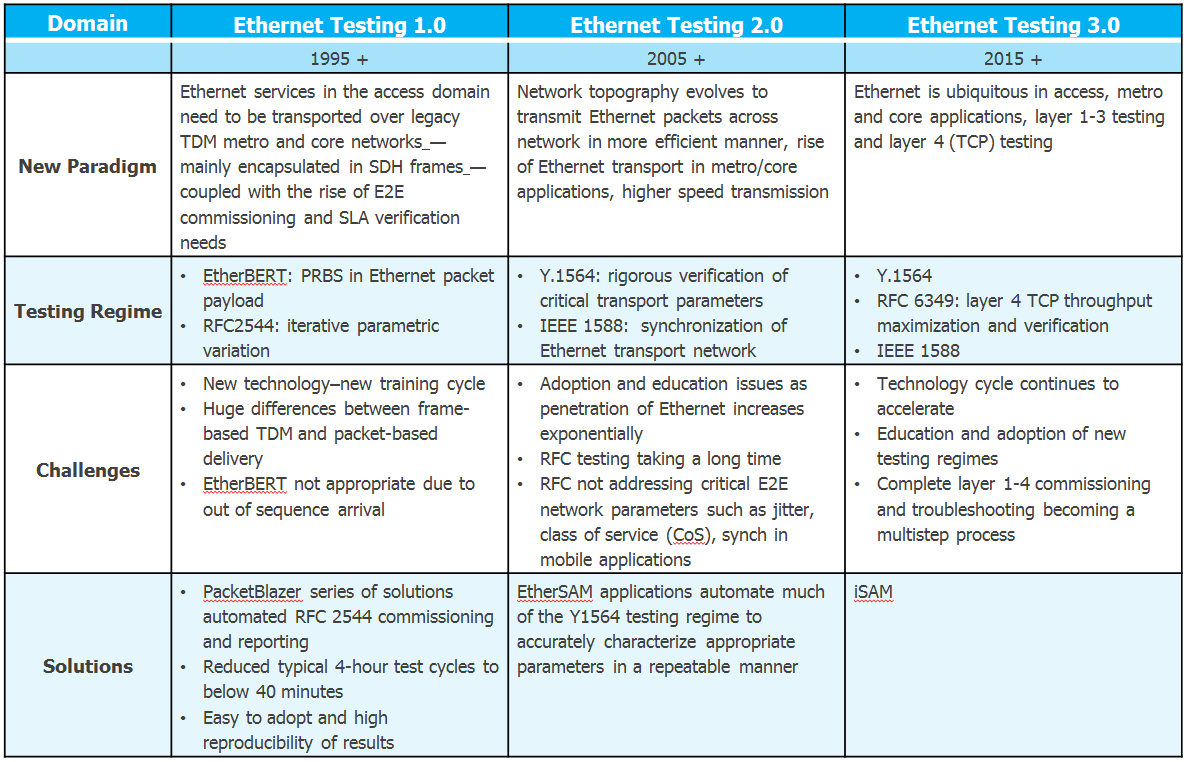The evolution of ethernet testing 3.0
In the last 20 years, the telecom industry has seen tremendous technological shift from traditional time-domain services to the point where packet-based Ethernet services are now ubiquitous everywhere in the network.
Now, more than ever, network operation managers need to be able to rapidly deploy a plethora of new high-quality services. In turn, field engineers are faced with the need to complete a wide array of tests to verify critical transport parameters which assure compliance and quality. Further, field teams are now facing tremendous complexity with the various troubleshooting applications out there. In the field, I see a lot of variation in the testing regimes used and every day I am surprised to come across outdated and highly inefficient practices to address today’s Ethernet services.
I am delighted to be able to introduce how EXFO’s R&D team are meeting my 10,000 hour challenge to deliver innovation and efficiency that really makes a tangible impact in successfully commissioning and troubleshooting our clients’ next-gen networks.
Let’s take a few moments to understand how the NetBlazer V2’s latest and greatest features will be a real game changer in addressing the challenges of Ethernet Testing 3.0.

To enjoy efficient field operations, it is important to tame issues around new technology adoption, training cycles (and knowledge retention), ability to make reproducible and appropriate field measurements and fast troubleshooting. With the rapid technology evolution, complexity and multilayer requirements, it is not surprising that we see such variation in field practices, as previously mentioned. The fact is: large improvements in operational efficiency and quality can be achieved quickly through adoption of best practices and leveraging the latest innovation.
For example, I recently witnessed execution of a full layer 1-4 circuit verification strategy in the field which was made up of over 40 testing steps, took over 3 hours and required 1.5 hours of data processing to produce a commissioning report for a single circuit. And all that was despite the use of EXFO’s EtherSAM implementation of the Y.1564 standard, which is still considered best in class and deployed by hundreds of operators around the globe. Given that each of these steps necessitated the manual input and adjustment of parameters, it was no surprise to find that human errors were a huge factor contributing to unnecessary truck rolls for repeat testing.
The new iSAM innovation and EXFO’s implementation of the RFC 6349 has taken the 40+ step procedure down to just 2 steps. Yes, just two steps. With the associated increase in automation and removal of human intervention, significant reduction in training time has been demonstrated, as well as improvement in overall testing/reporting time and reduction in repeat truck rolls to correct errors. Furthermore, this automation also brings huge benefits in troubleshooting applications—particularly critical when the clock is ticking and your SLAs are leaking penalties.
Stay tuned for Part 2 of our Evolution of Ethernet Testing 3.0 blog post that will delve into how iSAM represents a paradigm shift to meet the needs of our clients.
More about EXFO’s innovative solutions
With its unique collaboration with clients across the globe, EXFO has a track record of delivering innovation in all shapes and sizes–technological advances such as iOLM revolutionized optical characterization; flexibility with Test Function Virtualization changed the way clients invest in their transmission solutions and process automation; wireless fiber inspection probe has made critical everyday network operations accessible and removed the risk of human error. These widely adopted solutions are actively improving operational efficiency, promoting best practices and right-first-time testing while also actively reducing the CAPEX and OPEX investments for our clients.



